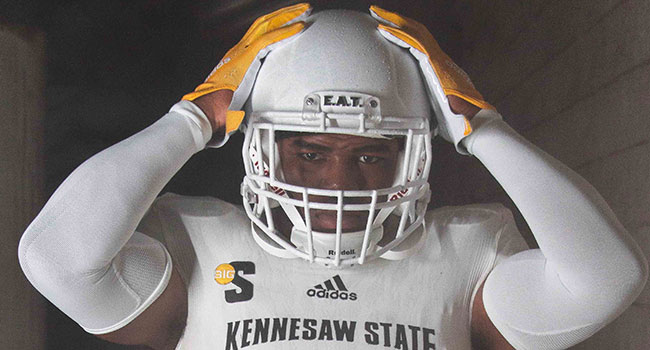 According to a study from researchers at the Boston University CTE Center, each year a person endures repetitive head collisions from playing football the risk of developing degenerative brain disease increases by 30 per cent.
According to a study from researchers at the Boston University CTE Center, each year a person endures repetitive head collisions from playing football the risk of developing degenerative brain disease increases by 30 per cent.
In addition, for every 2.6 years of play, the risk of developing chronic traumatic encephalopathy (CTE) doubles.
This study quantifies the strength of the link between playing football and developing CTE, according to the Boston University School of Medicine.
According to a BU School of Medicine article, “In a critical distinction between many previous CTE studies, the analysis included dozens of brains of former football players who did not have CTE. That sizable control group provided enough data for the researchers to be confident in their discovery that there is a strong relationship between CTE risk and the number of years a person plays football.”
“While we don’t yet know the absolute risk of developing CTE among American football players, we now can quantify that each year of play increases the odds of developing CTE by 30 per cent,” said Jesse Mez, lead author of the study and director of BU’s Alzheimer’s Disease Center’s Clinical Core.
The study also found that athletes who played football fewer than 4.5 years were 10 times less likely to develop CTE than those who played longer. Conversely, players who competed more than 14.5 years were 10 times more likely to develop CTE than those who played fewer.
The BU study is but one of a growing mound of research studies linking tackle football and CTE.
“[CTE is] much more common than we currently realize,” says Ann McKee, chief of neuropathology at VA Boston Healthcare System and director of the BU CTE Center. “And more importantly, this is a problem in football that we need to address, and we need to address it now.”
Here’s football’s foundational problem: You can’t put a helmet on the brain inside of the skull. Modern football helmets are great for preventing skull fractures, but they don’t address the problem of a brain floating around inside the head and crashing against the side of the skull upon impact.
My biggest concern isn’t the adults playing football in professional leagues, it’s the thousands of youth and high school players who play this dangerous game before they reach the age of consent. Legal adults in the pros (and in college) are free to make whatever decision they want about the activities they participate in. That said, we still have a moral obligation to fully inform college and pro football players of the dangers and risks of their game.
But when it comes to children playing football, it’s a different story altogether. These young athletes are being placed on the gridiron by parents or legal guardians. Children aren’t fully equipped to analyze the potential health implications of playing football. The adults in their lives are making these decisions for them. And those decisions could impact them for the rest of their lives.
According to the Brain Injury Research Institute, in any given season, 20 per cent of high school players sustain brain injuries.
It’s important to note that this issue isn’t just about concussions. The common view is that concussions are the big problem with football. That’s not the case. It’s the small, but repetitive, sub-concussive impacts that add up to a big problem over time.
Wake Forest University researchers followed 25 boys ages eight through 13 over a season of tackle football. They placed sensors inside the players’ helmets to measure impacts. Players accumulated between 250 to 580 “crashes” during the season.
The MRIs of the kids’ brains taken before and after the season showed that those “who experienced more cumulative head impact exposure had more changes in brain white matter.”
The stunning part is not one player had suffered a concussion. Brain damage had occurred without any concussions in the group. And the players and the parents weren’t even aware of it.
That’s scary.
Purdue University has conducted a similar study with similar results.
The reality is now excruciatingly clear: full-contact tackle football is a collision sport that damages the human brain in much the same way boxing does.
“There’s something to the play of football that damages the brain,” says McKee, one of the world’s preeminent experts on CTE. “That, to me, is irrefutable.”
How much longer is a society going to practise avoidance behaviour when it comes to the dangers football represents to the human brain – especially the developing brains of our children?
Ken Reed is sports policy director for League of Fans (leagueoffans.org), a sports reform project. He is the author of The Sports Reformers, Ego vs. Soul in Sports, and How We Can Save Sports.
For interview requests, click here. You must be a Troy Media Marketplace subscriber to access our Sourcebook.
![]() The views, opinions and positions expressed by columnists and contributors are the author’s alone. They do not inherently or expressly reflect the views, opinions and/or positions of our publication.
The views, opinions and positions expressed by columnists and contributors are the author’s alone. They do not inherently or expressly reflect the views, opinions and/or positions of our publication.

